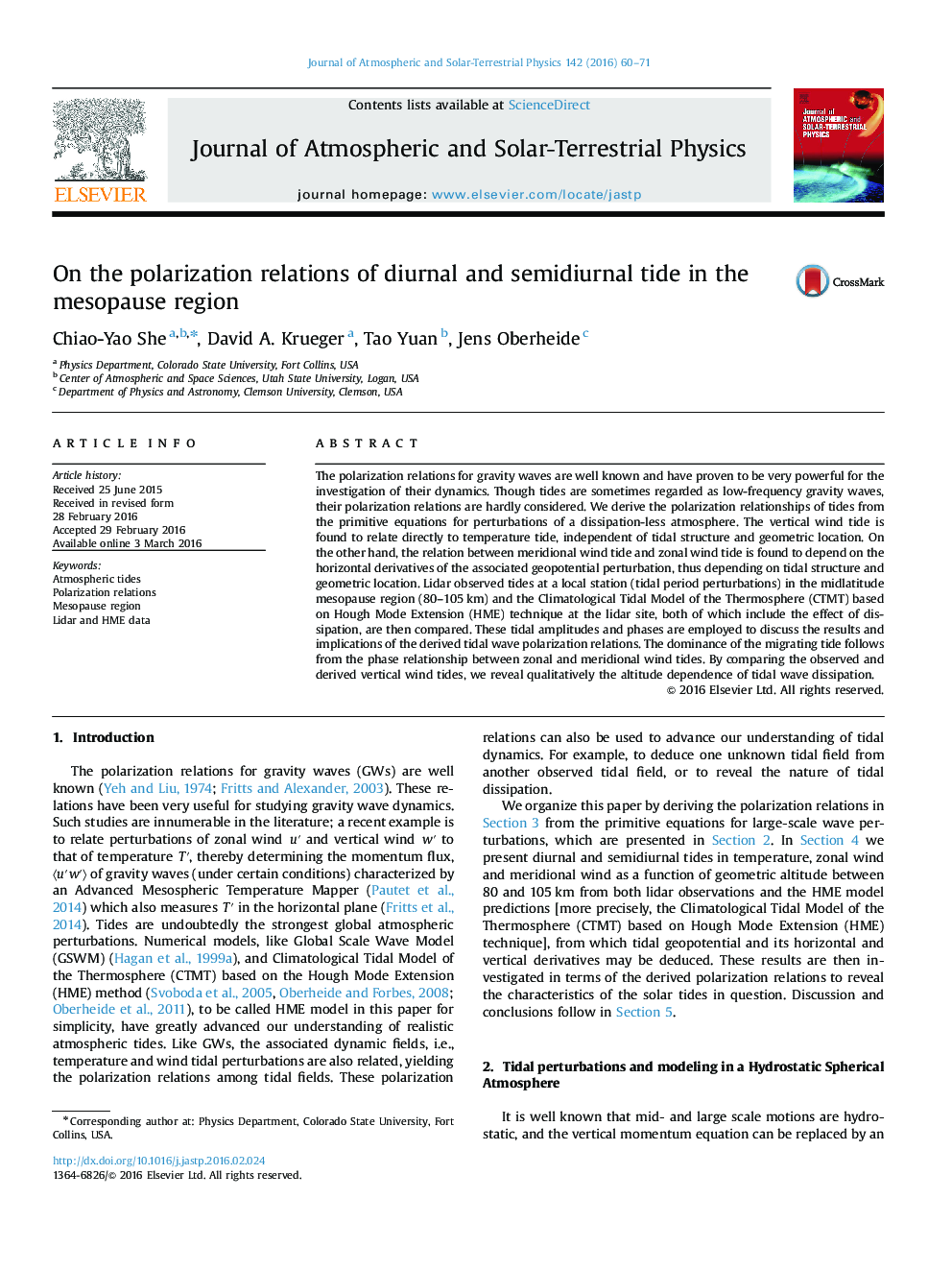| Article ID | Journal | Published Year | Pages | File Type |
|---|---|---|---|---|
| 8139954 | Journal of Atmospheric and Solar-Terrestrial Physics | 2016 | 12 Pages |
Abstract
The polarization relations for gravity waves are well known and have proven to be very powerful for the investigation of their dynamics. Though tides are sometimes regarded as low-frequency gravity waves, their polarization relations are hardly considered. We derive the polarization relationships of tides from the primitive equations for perturbations of a dissipation-less atmosphere. The vertical wind tide is found to relate directly to temperature tide, independent of tidal structure and geometric location. On the other hand, the relation between meridional wind tide and zonal wind tide is found to depend on the horizontal derivatives of the associated geopotential perturbation, thus depending on tidal structure and geometric location. Lidar observed tides at a local station (tidal period perturbations) in the midlatitude mesopause region (80-105Â km) and the Climatological Tidal Model of the Thermosphere (CTMT) based on Hough Mode Extension (HME) technique at the lidar site, both of which include the effect of dissipation, are then compared. These tidal amplitudes and phases are employed to discuss the results and implications of the derived tidal wave polarization relations. The dominance of the migrating tide follows from the phase relationship between zonal and meridional wind tides. By comparing the observed and derived vertical wind tides, we reveal qualitatively the altitude dependence of tidal wave dissipation.
Keywords
Related Topics
Physical Sciences and Engineering
Earth and Planetary Sciences
Geophysics
Authors
Chiao-Yao She, David A. Krueger, Tao Yuan, Jens Oberheide,
